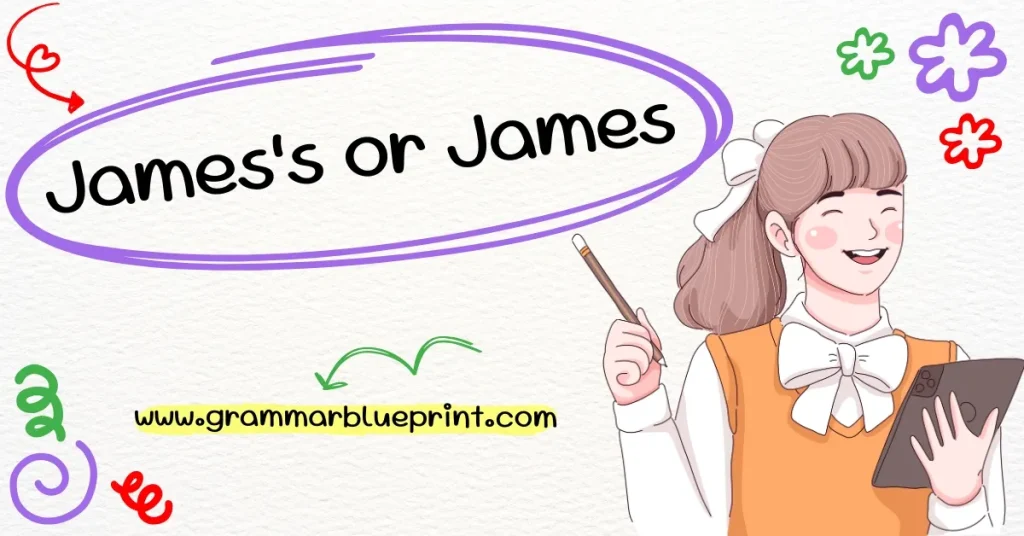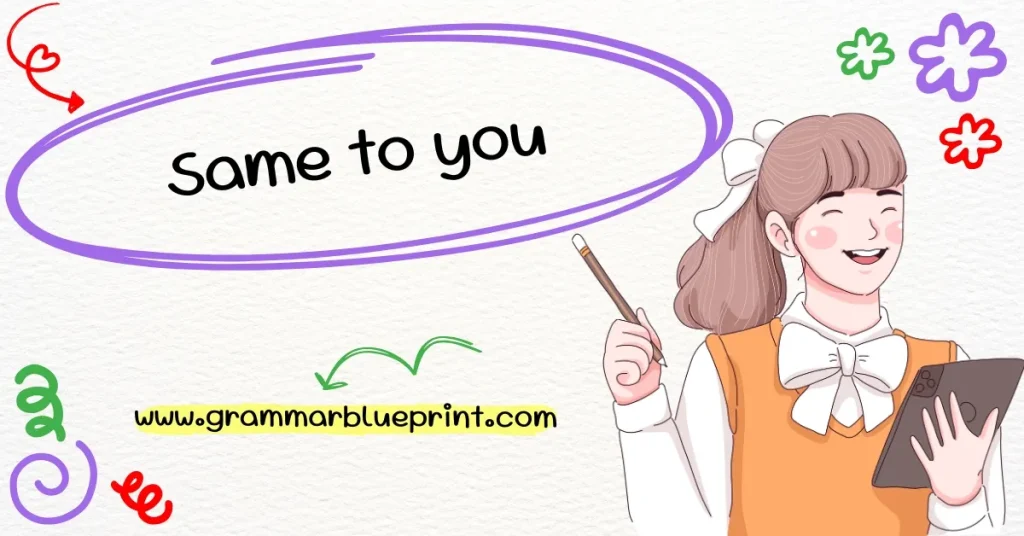The English language has its quirks, and one of the trickiest parts can be understanding possessive forms, especially when it comes to names like “James.” Should it be “James’s” or “James”? Well, you’re not alone if you’ve found yourself confused by this. Let’s break it down, so you’ll know exactly when and how to use each form without second-guessing yourself.
What is the Possessive Form in English?
The possessive form in English is a way of showing ownership or association. You’ve probably seen it many times in sentences like “Sarah’s book” or “The dog’s leash.” It’s easy to understand with simple examples, but things get a bit murky when the name you’re dealing with ends in “s”—like James. So, what gives? Let’s break it down.
Definition of Possessive Form
The possessive form typically shows that something belongs to someone or something. For example:
- John’s hat (the hat belongs to John)
- The cat’s tail (the tail belongs to the cat)
To form the possessive of a singular noun, you simply add an apostrophe + “s” to the end of the noun. But, as you’ve guessed, things get tricky with names like “James.”
Basic Rules of Possessive Apostrophes
Here’s the basic rule for possessive apostrophes:
- For most singular nouns, just add an apostrophe + “s.”
- Example: The boy’s toy (the toy belongs to the boy)
- For plural nouns ending in “s”, just add an apostrophe after the “s.”
- Example: The boys’ toys (the toys belong to the boys)
But when it comes to names ending in “s,” like James, things start to get more interesting.
When to Use “James’s” vs. “James”
Okay, so here’s the million-dollar question: Is it “James’s” or “James”? Both forms exist, but when should you use each?
Explanation of the Two Variations
- “James’s” is the traditional possessive form of “James.” It’s widely used to indicate something that belongs to James, like “James’s car” or “James’s book.”
- “James” (without the apostrophe + “s”) is sometimes used when referring to the name in a non-possessive sense, such as when you’re simply talking about the person and not ownership.
Both forms can be correct depending on the context and your preferred style guide.
Why It Matters in Grammar Usage
Using the correct form of “James” in your writing is important because it maintains the clarity of your meaning. While both “James’s” and “James” may be used, the possessive form “James’s” ensures that readers know you’re talking about something that belongs to James.
That’s the first part! Let me know if you’d like me to proceed with the second part.
How to Form Possessives with Names Ending in “S”
Now that we’ve covered the basics, let’s dive deeper into what happens when you’re dealing with names like “James” that end in “s.” The rule isn’t always the same, and there are a few different ways to handle it, depending on what style guide you follow.
Rule for Forming Possessive with Names Ending in “S”
For most names ending in “s,” English grammar traditionally adds an apostrophe + “s” to make the possessive. This means:
- James’s (indicating that something belongs to James)
- Thomas’s (indicating that something belongs to Thomas)
While this is the traditional way of doing it, things are slightly different in some style guides, and you might see other variations depending on the context.
Examples of Correct Usage (James’s vs. James)
Here are a few examples that clearly illustrate the correct usage:
- James’s car (The car belongs to James)
- James’s book (The book belongs to James)
- James’s house (The house belongs to James)
In each of these examples, you can see how the possessive form works by adding the apostrophe + “s” at the end of James.
Exceptions or Variations in Style Guides (e.g., Chicago vs. AP)
While James’s is traditionally correct, some style guides, like the Associated Press (AP) style, suggest leaving out the extra “s” after the apostrophe. According to AP, it’s enough to add just an apostrophe:
- James’ car (instead of “James’s car”)
The Chicago Manual of Style, on the other hand, prefers adding both the apostrophe and “s” (as we’ve discussed). The important thing is to stay consistent with the style guide you choose to follow. So, whether you use “James’s” or “James’,” the key is to use one format throughout your writing.
Common Mistakes in Using “James’s” or “James”
While forming possessive forms might seem straightforward, there are a few common mistakes that many people make when using “James’s” or “James.”
Mistakes to Avoid When Using Possessive Forms
- Omitting the Apostrophe: One of the most common mistakes is forgetting to add the apostrophe when showing possession. For example:
- Incorrect: James car (No apostrophe)
- Correct: James’s car (Apostrophe shows possession)
- Overusing Apostrophes in Plurals: If you’re dealing with multiple people named James, you shouldn’t add an apostrophe to make it plural.
- Incorrect: James’s are here (This is plural, not possessive)
- Correct: Jameses are here (No apostrophe)
- Confusing “James’s” and “James”: Another mistake people make is using “James” (without the apostrophe) when they mean to show possession.
- Incorrect: This is James book (It’s meant to show possession)
- Correct: This is James’s book (Apostrophe indicates ownership)
By making sure you’re following these simple rules, you can avoid these common pitfalls and ensure your writing is clear and grammatically sound.
With this understanding, you’re well on your way to mastering possessive forms, especially with tricky names like “James.” But before you go off and start applying these rules in all your writing, let’s explore whether “James’s” is always the right choice for every context.
Let me know if you’d like to continue with the next part!
Is “James’s” Always Correct?
As we’ve explored so far, “James’s” is the traditional possessive form, but is it always the best choice? The answer depends on several factors, including style preferences, the formality of your writing, and the type of audience you’re addressing.
Discussion on Style Preferences (Formal vs. Informal Writing)
Different style guides dictate how you should form possessives, and this can influence whether “James’s” or “James’” is more appropriate.
- In formal writing: The Chicago Manual of Style leans heavily towards adding both the apostrophe and “s” for names ending in “s.” So, for example, James’s would be used in scholarly or professional writing to maintain formality and clarity.
- In informal writing: Some style guides, such as the AP style, recommend omitting the extra “s” after the apostrophe, making James’ the preferred option. This makes it a little simpler and quicker to write, especially in news writing or casual content.
It’s important to note that no matter which style guide you follow, consistency is key. Stick with one version throughout your document to avoid confusion.
The Role of Consistency in Grammar
When you choose to use “James’s” or “James’,” remember that the key is consistency. Mixing the two within a piece of writing can lead to confusion for your reader. Pick one version and use it for the duration of your work.
Why Apostrophe Usage Matters in English Grammar
You might think that apostrophes are a small detail, but they play a huge role in making your writing clear and easy to understand. Let’s break down why apostrophes are so important.
The Significance of Proper Apostrophe Use for Clarity
Apostrophes indicate possession, which helps us understand who or what something belongs to. Without them, sentences can become ambiguous, leading to confusion.
For example:
- Without apostrophe: “James book was on the table.” (Is this James’s book? Or is it a book called “James”?)
- With apostrophe: “James’s book was on the table.” (This makes it clear that the book belongs to James.)
In the second example, the apostrophe clarifies that we’re talking about possession, not the name of the book. Apostrophes serve as markers of possession, and without them, our writing loses clarity.
How Incorrect Use Can Change Meaning
Using an apostrophe incorrectly can alter the meaning of a sentence entirely. Consider this example:
- Incorrect: “Its a beautiful day outside.”
- In this case, “Its” should be “It’s” (short for “It is”). The lack of an apostrophe here changes the meaning of the sentence.
- Correct: “It’s a beautiful day outside.”
- The apostrophe correctly shows that it’s a contraction for “it is.”
Apostrophes can also be the difference between singular and plural, as we’ve already discussed. So, getting them right is crucial for clear and effective communication.
By understanding the importance of apostrophes and using them correctly, your writing will be clearer, more professional, and easier to read. But there’s one more thing you can do to really make these possessive rules stick.
Let me know if you’d like me to continue with the final part!
Tips for Remembering Possessive Rules
When it comes to English grammar, remembering all the rules about apostrophes can feel like a never-ending battle. But don’t worry, I’ve got some practical tips to help you keep track of when and how to use “James’s” correctly, as well as possessive forms in general.
Easy Tricks for Identifying When to Use “James’s”
- Think about ownership: Ask yourself, “Does James own this thing?” If the answer is yes, then you know you need to add that apostrophe + “s.”
- Example: Does James own the car? Yes, so it’s James’s car.
- Names that end in “s” are tricky: With names like “James,” just follow the rule—apostrophe + “s,” unless you’re following a style guide that says otherwise.
- Remember: James’s book is correct in most cases, but James’ book might be acceptable in informal settings.
- Don’t overcomplicate it: The goal is clarity. If adding the extra “s” makes things more readable and understandable, go for it. But if it feels awkward or the style guide recommends something simpler, choose the alternative.
- Practice with other names: Try applying the same logic to other common names like Thomas, Charles, or Chris. Test whether it feels natural to use the apostrophe + “s,” and adjust as needed.
By applying these simple tricks, you’ll find that possessive forms become second nature, and you’ll breeze through even the trickiest names.
Practical Examples of “James’s” in Sentences
Now let’s take a look at some practical, real-world examples of how to use “James’s” correctly. These examples will show you how to integrate the possessive form smoothly into your writing.
Real-World Examples Using “James’s”
- James’s car is parked in front of the house.
- Here, we’re talking about James’s car, indicating that the car belongs to James.
- I borrowed James’s pen because mine ran out of ink.
- In this case, the pen belongs to James, so we use “James’s” to show possession.
- James’s family is planning a reunion next month.
- Again, the family belongs to James, so we use the possessive form “James’s” here.
Contrast with Incorrect Examples to Highlight the Error
- Incorrect: “James car is parked in front of the house.”
- This sentence leaves out the apostrophe, which causes confusion. We don’t know if it’s referring to “James” the person or “James” the thing.
- Correct: “James’s car is parked in front of the house.”
- Incorrect: “I borrowed James pen because mine ran out of ink.”
- This sentence misses the possessive apostrophe, making it unclear whose pen is being referred to.
- Correct: “I borrowed James’s pen because mine ran out of ink.”
- Incorrect: “James family is planning a reunion next month.”
- Again, without the apostrophe, the sentence loses its clarity.
- Correct: “James’s family is planning a reunion next month.”
By using these examples, you can easily see the difference between correct and incorrect usage, and how important the apostrophe is for clarity.
Now that you’ve got the full scoop on when to use “James’s” or “James,” the key takeaway is this: always add the apostrophe + “s” to indicate possession, especially with names like James. Whether you’re writing formally or informally, the goal is clarity and consistency. So, take these rules, practice, and soon enough, you’ll be using possessive forms like a pro.
Remember, it’s all about practicing and keeping things simple. The more you use possessive forms in your writing, the more natural it’ll feel. Feel free to leave any questions or comments below—I’m always happy to help you out!
That’s the full article! Let me know if you need any changes or further tweaks.



